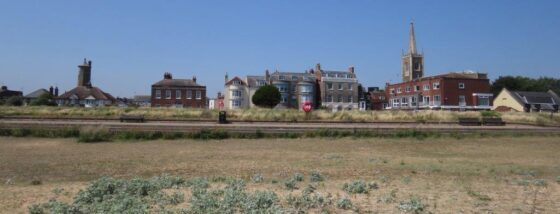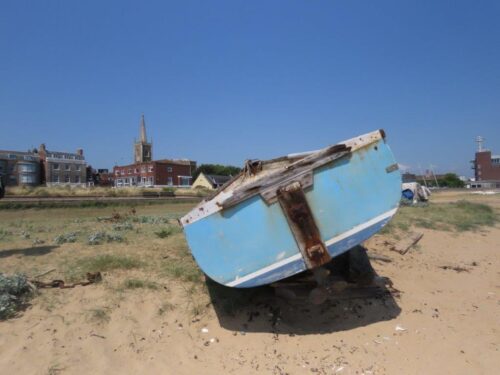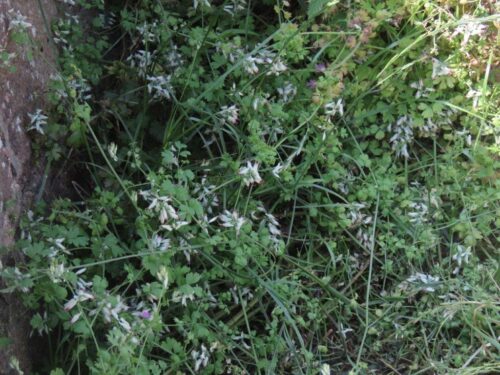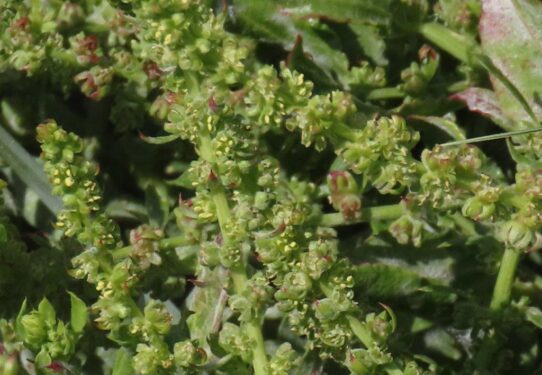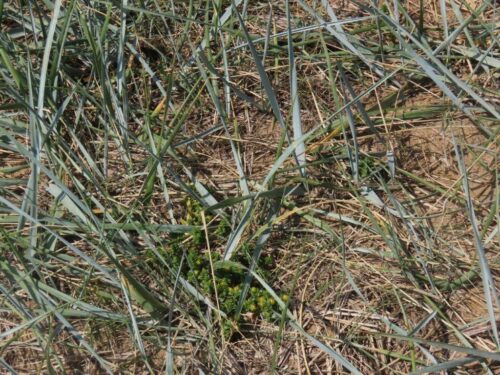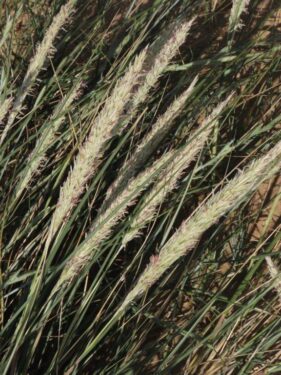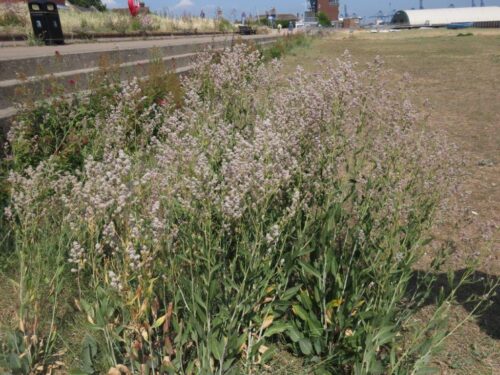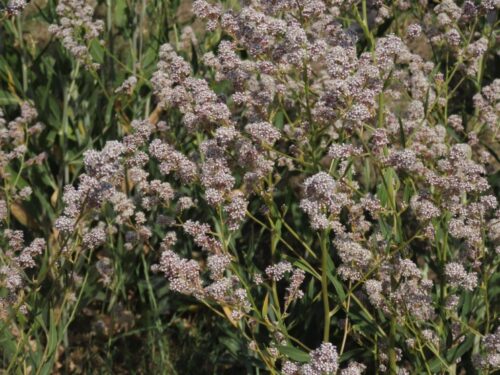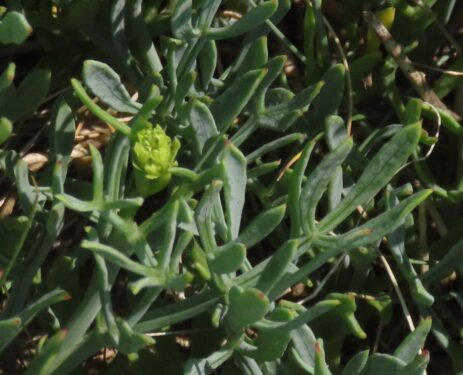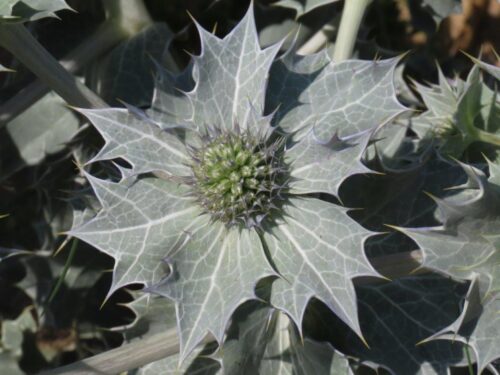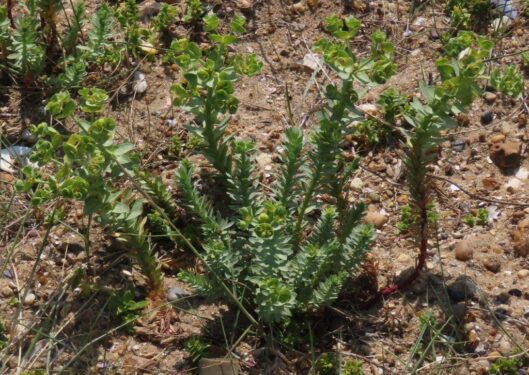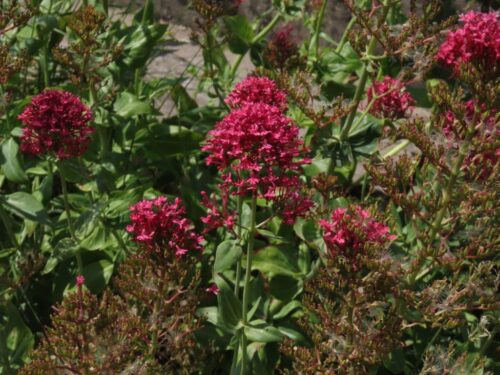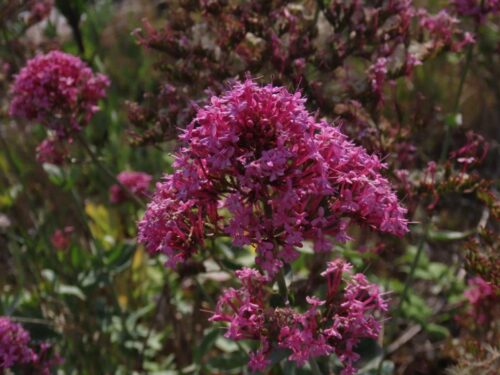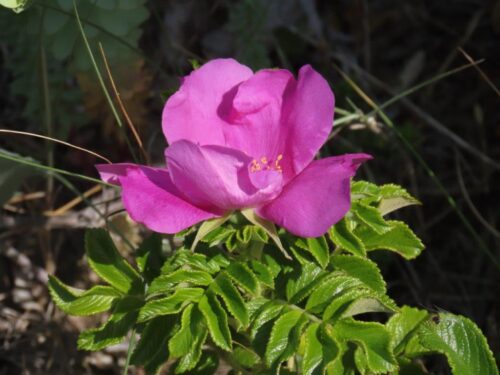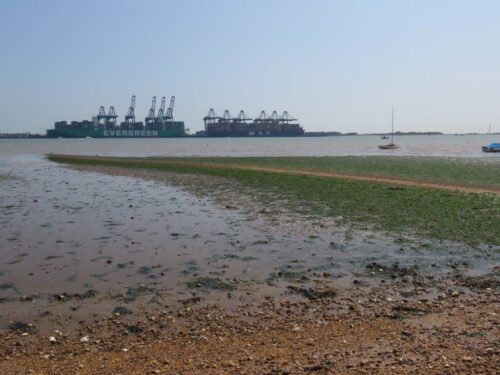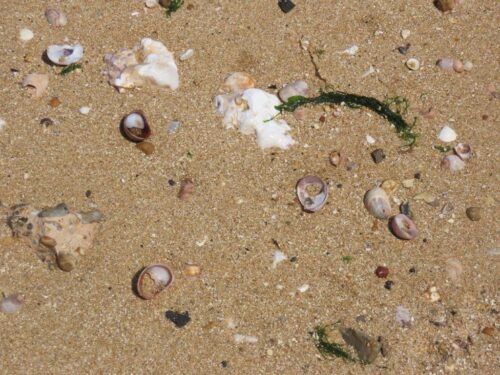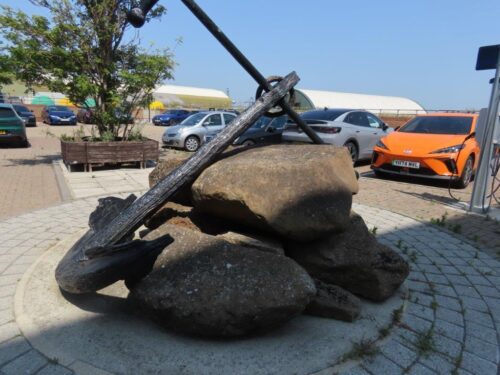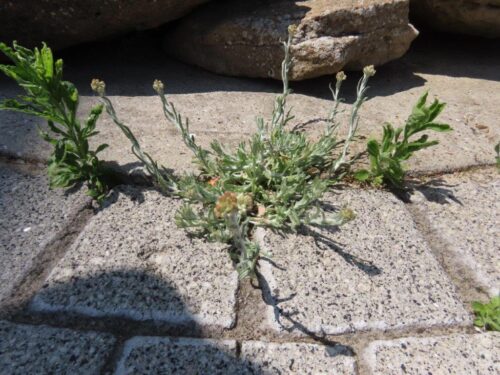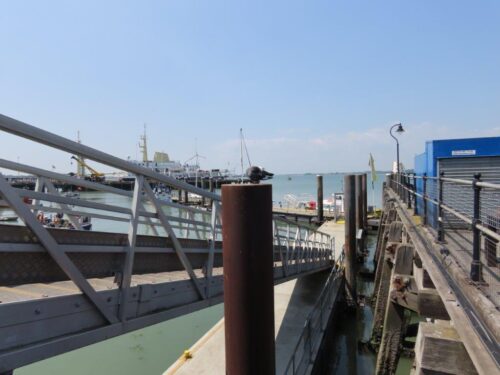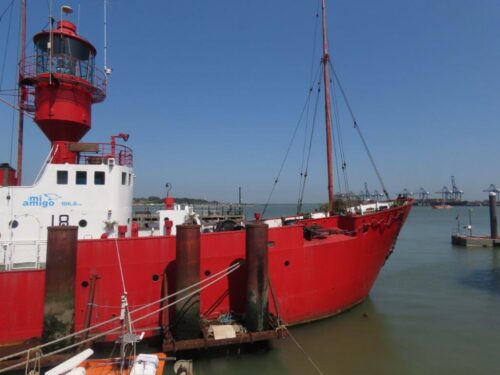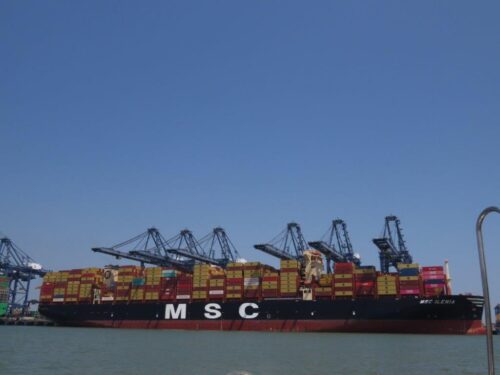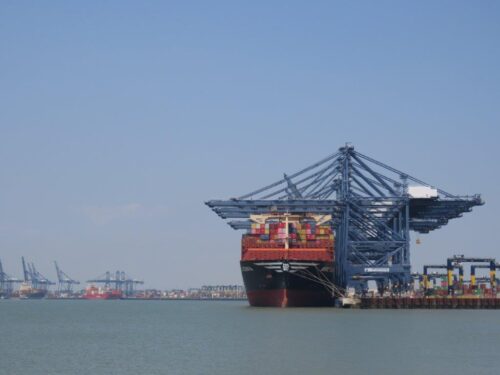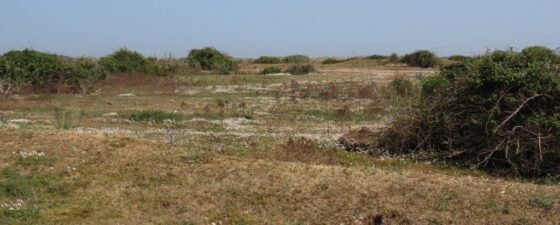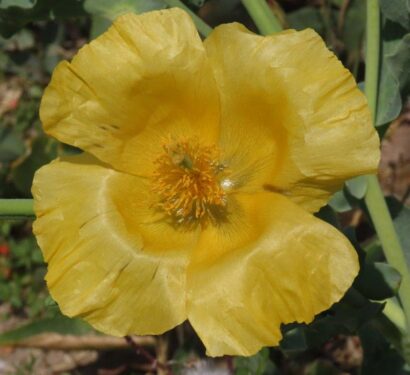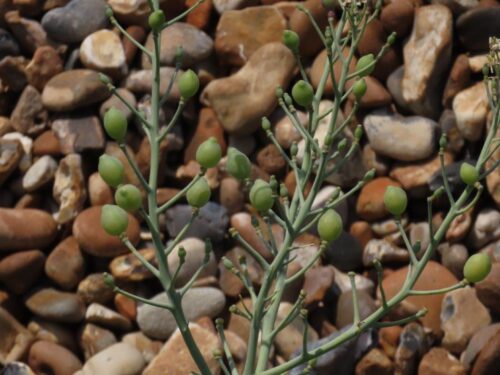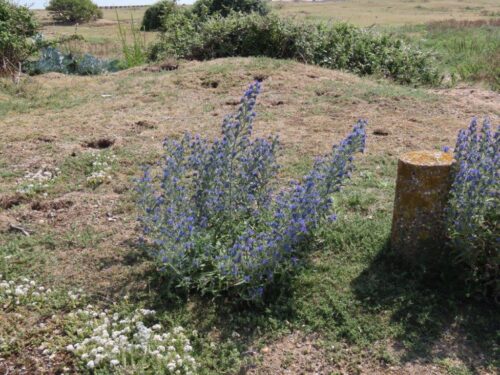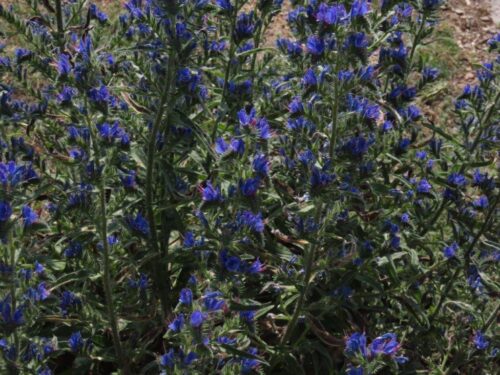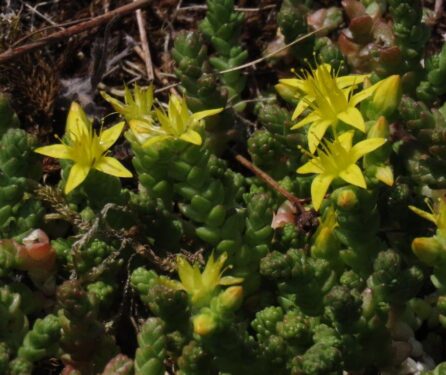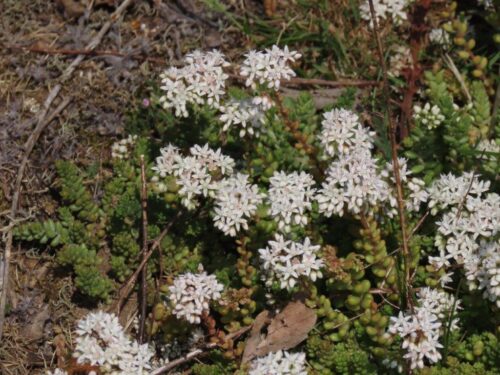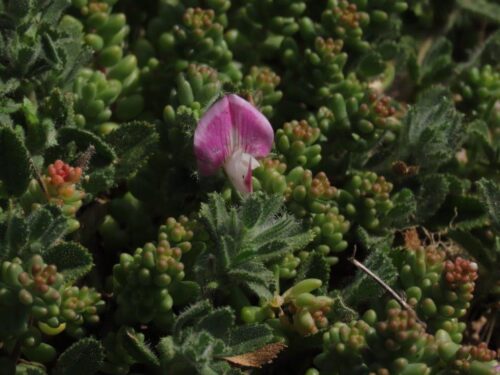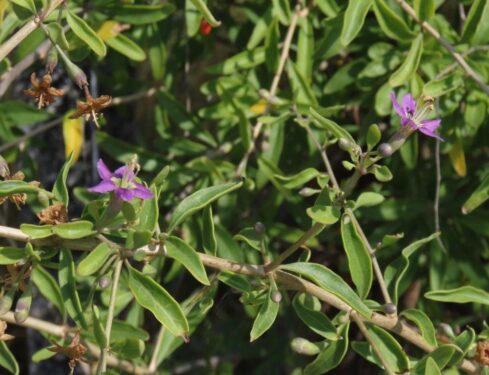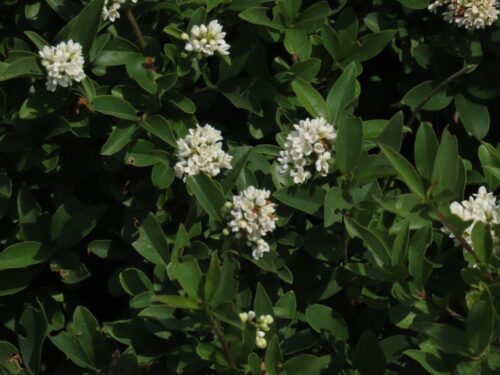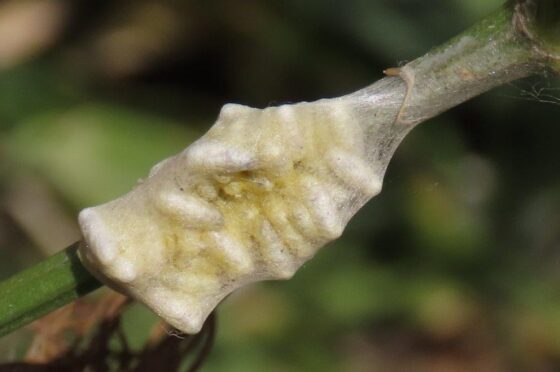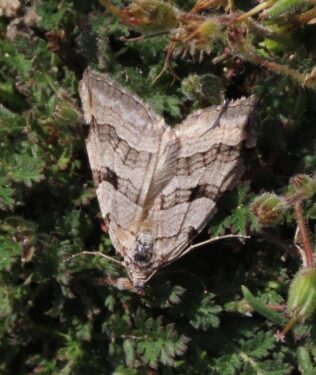Phew! That was a hot one: midsummer, crystal blue skies, fierce sunlight, tempered only by a little welcome sea breeze by and on the water around Harwich and Felixstowe Dock. Our first port of call was Harwich Beach, an interesting area of low sand dunes, rich in specialised, often drought-tolerant plants.
The first small stretch of beach featured White Ramping-fumitory and Sea Beet, alongside fleshy Sea Sandwort, waxy-leaved Lyme Grass and tightly rolled but flowering Marram.
Moving around the corner to the larger beach, we were among Dittander (tasting of horseradish) and Rock Samphire (with more than a hint of diesel); Sea Holly and Sea Spurge; Red Valerian (in both red and pink forms) and Japanese Rose. The latter is hated by many, given that it can be invasive and overwhelming on sand, but this patch has barely grown since I first saw it three decades ago. Bees love it, and so do I: the most intense rose scent you could ever imagine!
With views across to Landguard in Suffolk, shells on the beach were many and varied, including Portuguese Oysters, Common and Slipper Limpets, Periwinkles and Cockles. Then above the town Swifts were screaming, and on the grassy Mallow-covered banks, several Meadow Browns and a couple of Painted Ladies, probably newly emerged rather than newly arrived, given their pristine plumage.
Back through Harwich, past the many historical sites, and the geological display of ice-transported boulders dredged from the channel when it was last deepened; and also Jersey Cudweed, once an extreme rarity but now an expected colonist of block paving.
To Ha’penny Pier where most boarded the foot ferry to Felixstowe, a 15-minute crossing on flat calm seas, ideal opportunity to see the port and its shipping relatively close up. It is a remarkably complex bulk operation, but it does beg the question ‘how much of the stuff in those boxes do we actually need?’. Fast fashion has a lot to answer for…
A beach landing at Landguard led straight to the Viewpoint Café and a very pleasant lunch, before we headed out for another hour on foot around Landguard Point, taking a large loop around the perimeter of Landguard Fort, a strategic defensive establishment protecting the harbour over the past few centuries.
But for us it was the shingle flora that was the attraction, including Yellow Horned-poppy, Sea Kale and Viper’s-bugloss on the more bare shingle…
…Biting and White Stonecrops, along with Rest-harrow, in areas with greater vegetation cover (albeit heavily Rabbit-grazed)…
… and maritime scrub, incorporating Wild Privet (scenting the air alluringly and extravagantly), Tamarisk and Duke-of-Argyll’s Tea-tree, in flower and fruit.
Aside from the plants there were plenty of Linnets bouncing and twittering around the scrub, noisy packs of unruly teenage Starlings. Jude’s sharp eyes located the nemesis of some unfortunate caterpillar, covered in the eruptant pupae of a parasitic wasp, and in a final flourish, we found a Treble-bar moth, not surprisingly perhaps given the abundance of its St John’s-wort food plant on the peninsula.
And so it was back home once more on the ferry, and for most of us a very welcome drink in The Alma! This is likely to be our last WildEssex walk for a few months: thanks to those who have joined us today and earlier in the year. we went out on a high – and we WILL be back!
